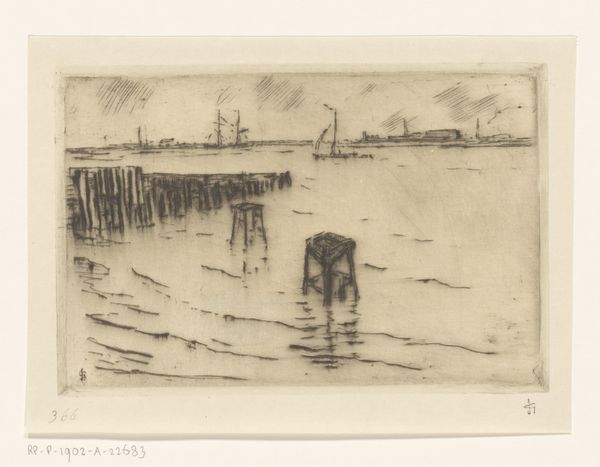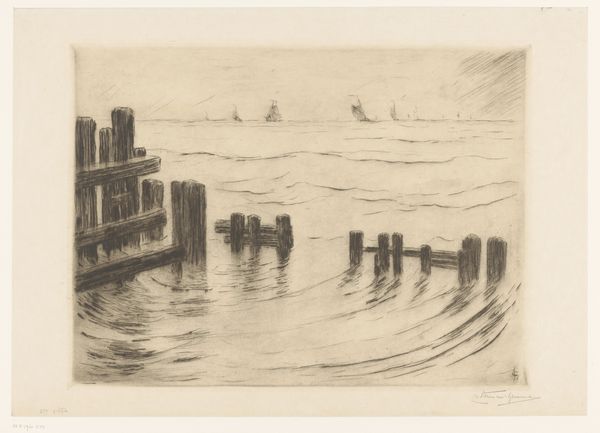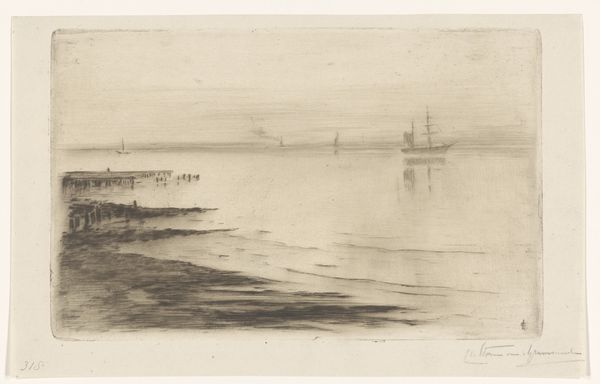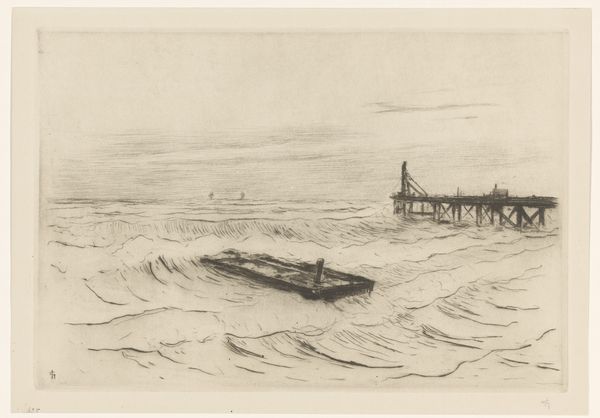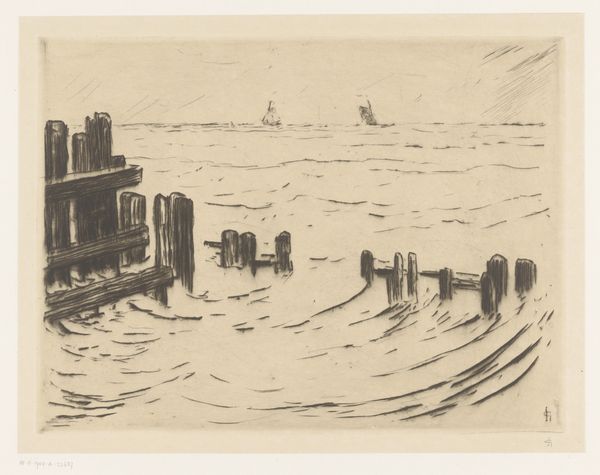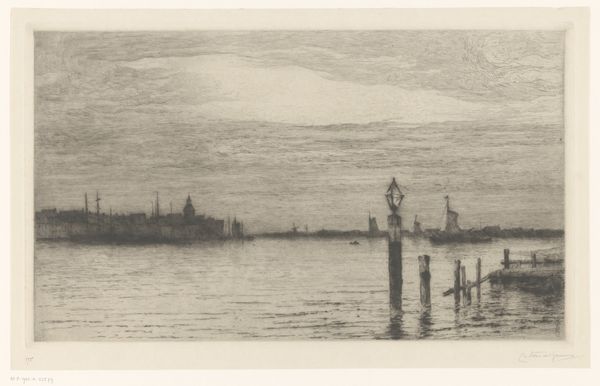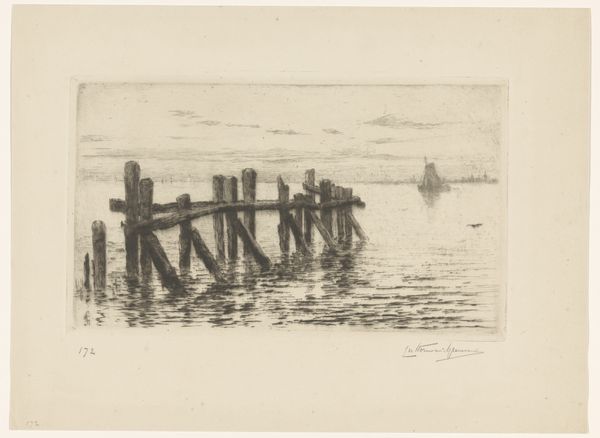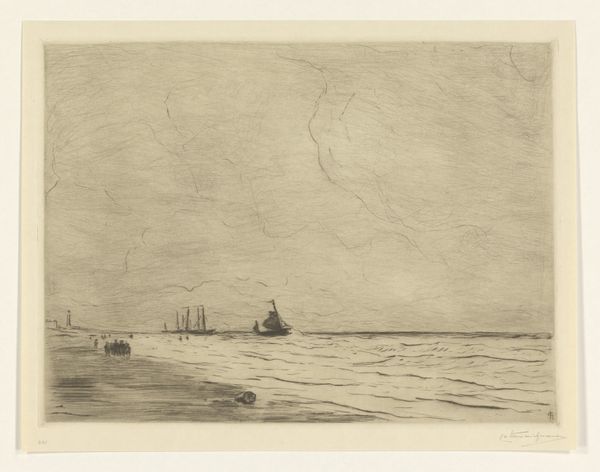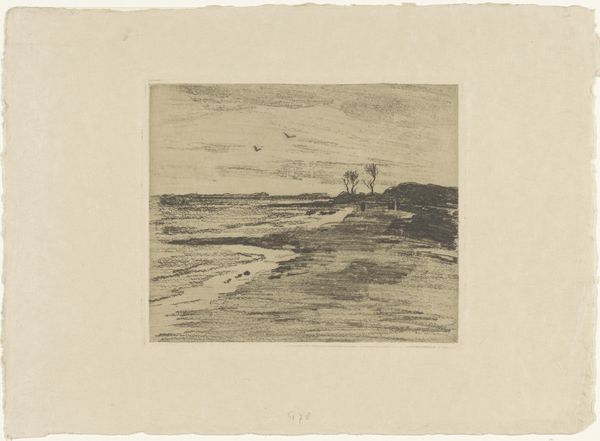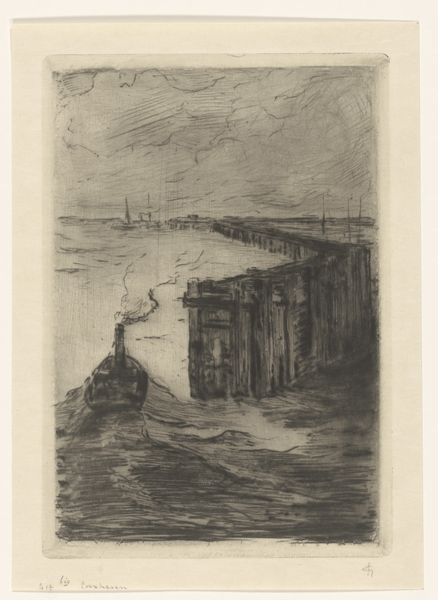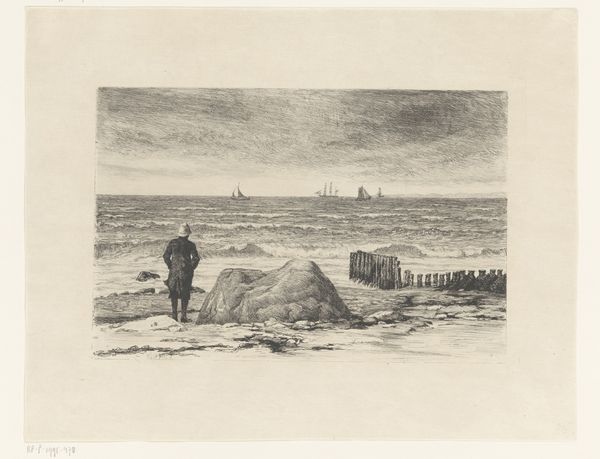
print, etching
#
dutch-golden-age
# print
#
etching
#
landscape
#
etching
#
realism
Dimensions: height 152 mm, width 258 mm
Copyright: Rijks Museum: Open Domain
Editor: Here we have Carel Nicolaas Storm van 's-Gravesande’s etching, "Pier van Vlissingen," created sometime between 1851 and 1924. The monochromatic landscape feels very bleak and serene to me at the same time. What stands out to you when you look at this print? Curator: Immediately, the repetitive nature of the pier's posts catches my eye. Notice how the artist uses a series of vertical lines to create a sense of rhythm. They evoke a feeling of both resilience and decay – those pilings stand firm against the constant battering of the waves, yet they’re clearly weathered by time. Does this juxtaposition resonate with you? Editor: Absolutely, the rhythm makes me think about time and weathering. There’s that lone sailboat on the horizon, too, so small compared to the pier. Curator: Yes! The sailboat becomes a powerful symbol. What do you think it symbolizes? Editor: Perhaps human ambition against the immensity of nature? Or maybe a sense of longing or adventure? Curator: Precisely. The pier itself represents mankind’s attempt to tame the sea, but nature always exerts its dominance. It’s an etching, which traditionally is about transferring knowledge and a kind of exactitude, yet there's all this powerful, ambiguous feeling coming through, right? Editor: It’s fascinating to consider those competing intentions. I initially only noticed the quiet beauty, but I see it as more dynamic now. Curator: And that's the power of art, isn't it? It allows for multiple interpretations, revealing new layers with each viewing. It carries these layers of human intention across time. Editor: I'll definitely carry those reflections forward as I look at more art. Thanks for sharing your expertise!
Comments
No comments
Be the first to comment and join the conversation on the ultimate creative platform.

